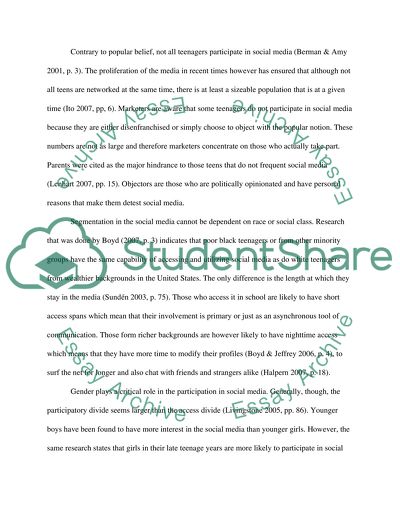Cite this document
(“Marketing to Teenagers on Social Networking Sites Dissertation”, n.d.)
Retrieved from https://studentshare.org/marketing/1588188-marketing-to-teenagers-on-social-networking-sites
Retrieved from https://studentshare.org/marketing/1588188-marketing-to-teenagers-on-social-networking-sites
(Marketing to Teenagers on Social Networking Sites Dissertation)
https://studentshare.org/marketing/1588188-marketing-to-teenagers-on-social-networking-sites.
https://studentshare.org/marketing/1588188-marketing-to-teenagers-on-social-networking-sites.
“Marketing to Teenagers on Social Networking Sites Dissertation”, n.d. https://studentshare.org/marketing/1588188-marketing-to-teenagers-on-social-networking-sites.


